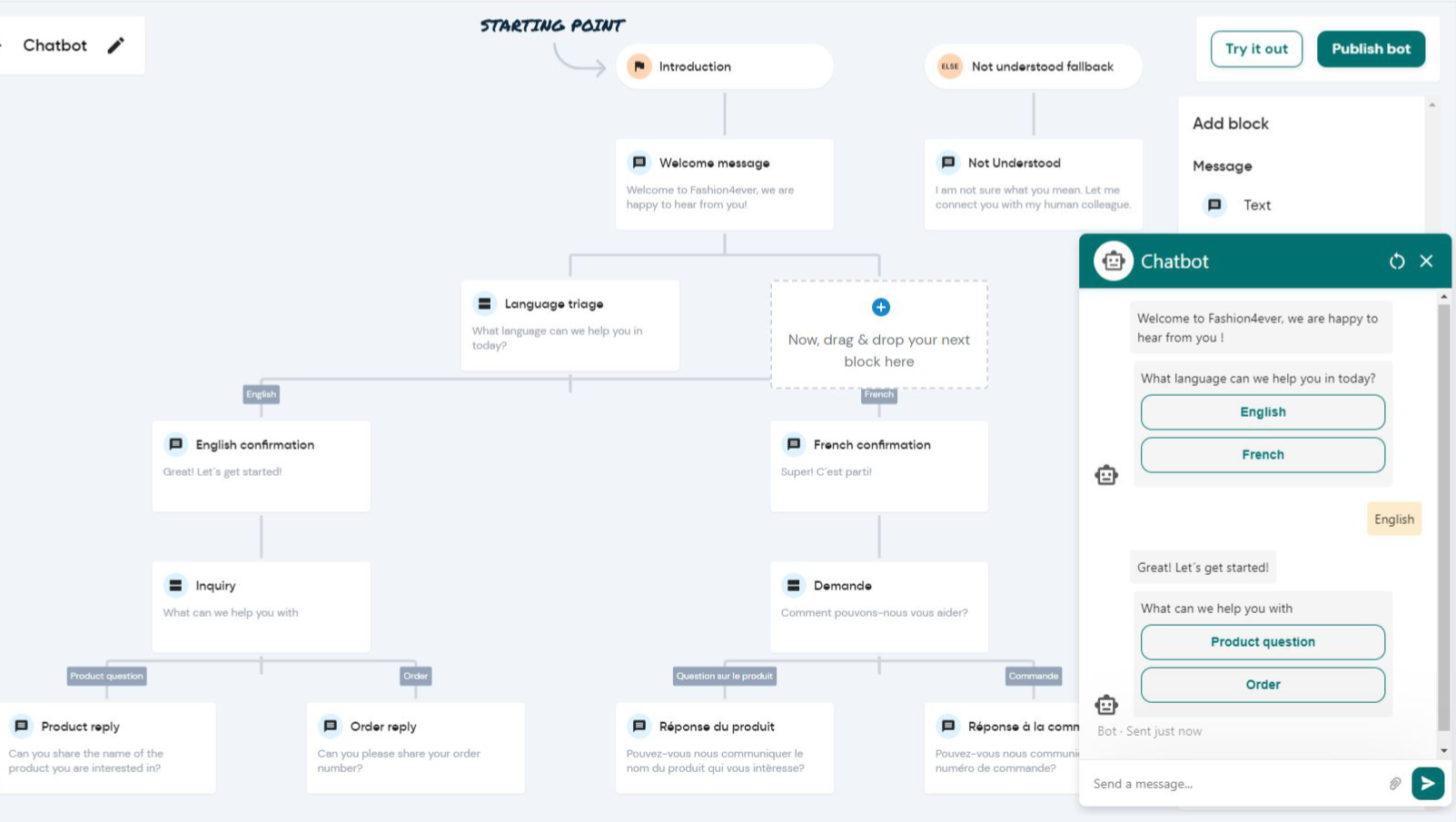Conversations
Not using chatbots? Why your small business is missing out!

Conversations

Is it worth investing in a chatbot? If you’re a large company with more than 1,000 employees, you’re probably already doing that! But how about small and mid-sized businesses? Implementing chatbots seems complex and expensive. It doesn’t have to be!
Chatbots save companies time, money, and reduce the workload for employees. And while small and mid-sized businesses are well aware of the benefits of chatbots, they’re still hesitant when it comes to implementing them.
Do we have the resources for this? Is it safe? Can we come up with a solution that helps our team and our customers? Do we need special IT skills?
These are very valid questions! Especially with changing customer expectations (fast service instead of being on hold!) and chatbot technologies such as GPT on the rise, it’s crucial for small and mid-sized businesses to not get left behind.
So, why are smaller companies still hesitant to build chatbots and how they can overcome these challenges to bring the benefits of chatbots to their company?
That’s exactly what I explored at this year’s 5th World Chatbots & Voice Summit in Berlin. In the following, I’ll sum up the most important points.
As with every trend, there are certain life cycles that come along with adapting new technologies. With chatbots, we are currently in the stage where an early majority has started to implement chat and voice bots.

There are a few indicators, though, that show that we’re moving into a wider adaption of chatbots.
These developments provide the perfect environment for smaller companies to start implementing chatbots. So, what’s stopping them?
Too complex
One of the main reasons why smaller companies don’t build chatbots is the perceived complexity of developing a chatbot. They assume that building a chatbot requires technical skills, a whole team of chatbot experts and programmers, and that it’s too complicated for them.
Not enough resources
Consequently, if you think a bot project is too complex, you’re also worried that you don’t have enough resources. And it’s true! Small businesses don’t have the same budget as large enterprises who can easily hire developers, purchase an expensive platform, or even build their own bots.
No benefits for your business
Even if smaller companies consider building a bot, they might think that it’s not worth it for them. They believe that a chatbot isn’t relevant for their business and that it won’t significantly improve their customers’ experience, or not save them enough resources. As a result, they choose not to invest in a chatbot.
Prejudices about chatbots
Some smaller companies are hesitant to build chatbots because the technology has a bad reputation and might scare off their customers and harm their company’s reputation. After all, who hasn’t had a frustrating experience with a chatbot at some point!?
While these concerns are valid, I also believe that we have very good answers and solutions!
So, how can we address these problems?
To address negative perceptions of chatbots, we need to change the surrounding narrative. Rather than focusing on the potential downsides, we should highlight successful use cases of similar companies. We need to emphasize the benefits of chatbots, such as:
Smaller companies work with a more limited budget, which is why they need to see a return on their chatbot investment faster. That’s why I believe that we need to offer a bot builder that provides businesses with an immediate return on investment, while keeping the level of needed expertise to a minimum. Ideally, the bot builder grows in capabilities as the customer gets more out of the bot.
Level one: ready-to-use templates
One way to make it easier for smaller businesses to implement chatbots is to already have an industry-specific template that they can just start using. The advantage is that it’s a very fast and easy integration of the technology. On the flip side, no two businesses are exactly the same. Even if they are from the same sector, the use cases might differ, so depending on the situation, a template might not always work.
Level two: build your own bot
Many companies don’t need a complex bot, but a specific one that works for their individual situation. Using drag-and-drop tools is a great way for small companies to achieve that. In that case, the AI is integrated into the bot builder, but the companies only work with a fun and intuitive front end that makes it easy for them to build their own bot.

Level three: advanced AI
Sometimes, a use case is very complex, so you might need a more advanced bot. In that case, it’s important that you start with a basic solution where it’s easy to build on. That reduces the amount of work and resources you have to put into your chatbot, and helps you grow your bot step by step.
That’s why, for example, at Sinch Engage, we offer all of these options, depending on what your specific use case is. You can start with templates, or use our very intuitive bot builder that lets you set up a bot flow in minutes. Or, for more complex use cases, we offer advanced AI capabilities.